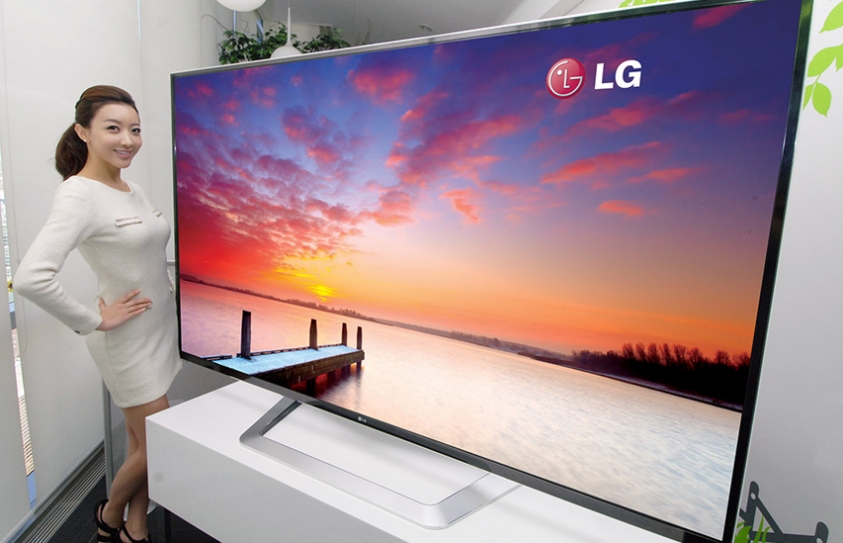
The Technology – Content Nexus
by Hans Kapadia February 2 2015, 7:31 pm Estimated Reading Time: 5 mins, 48 secsAs the New Year begins, consumer electronic fans from across the world gear up for the Consumer Electronic Show (CES) in Las Vegas, Nevada. This behemoth of a convention hosts a plethora of the best and upcoming technologies that will shape future generations and technology. This year at CES, we saw a range of different technologies from wearable devices to drones. The ??nternet of Things??was the keyword for this year?? convention as most company displayed a range of products that would co-habitate and ??peak??to each other and make life simpler for humans. From pots for plants that would measure the angle of sunlight and feed plants with nutrients and water on its own to self-driving cars that could take people from point A to B, the future seemed wonderful.
In the past years, many of the big TV manufacturers have had displayed their future ready TV sets and have used this convention as the proving grounds to test the market for their devices. This years TV line saw a host of 4k Television sets from Sony, LG, Samsung and many other manufacturers. While the TV sets were beautiful, hosting a range of features such as being able to find out when you reach your house and put on your favorite TV channel depending on the time or day or simply transferring what you have on your mobile or tablet device to the TV set. 4K Technology for a layman?? understanding is that basically regular HD content which would offer playback at 1920x1080 pixels would now require content that is shot and distributed at 4096x2160 pixels. The final result is the picture rendered on these devices is breathtakingly beautiful and offers colors and contrasts that have not been seen before. While technology has progressed and is ready to offer us the best there is right now (not taking into account the exorbitant price points these TVs currently sell at), the content side of things has not shaped up. While most of Europe and the USA currently offer viewers most channels (Internet or TV) in Full HD, the penetration of 4K ready content is very low.
Direct TV, a US based internet streaming service has launched its first 4K ready satellite into orbit which will soon allow subscribers in the USA access to 4K ready content. At present, these subscribers will have access to 20 big name movies to watch in 4K. On the content side of things, CES proved to be very fruitful as 4K TV manufacturers decided to tie hands with the biggest networks and studios in a strategic partnership that will see these studios take advantage of the leaps in 4K technologies and start creating content based on these parameters. This can be seen as a win-win-win for Manufacturers, Creators and finally the audiences; as the former will have increased TV sales; the creators will be able to offer more value to their consumers and finally the latter will be able to take on this added value being offered to them and enjoy a much better entertainment experience.
But that is still the USA. We are most likely to see early adoption of these practices in Europe, but where does that leave India? India is currently on the brink of an HD revolution (rather late, but still needed). Digitization has been completed in 4 metros and most Tier 2 cities. With the Set Top Box subscription model, consumers have access to channels in Full HD. Dropping rates for Internet connectivity and greater access to the network is empowering more and more people to view content in all its glory over multiple devices. Star sports, the leading network in sports entertainment in India, has recently (1st Feb) added two more channels to its HD bouquet, giving consumers access to four HD channels now. One channel (Star Sports HD3) has exclusively been added to complement Star Sports 3, which is their Hindi and regional language based channel. Along with these two channels, one more piece of exciting news is that Videocon D2H and Tata Sky have opened up registration for their 4K ready set top boxes. As India has an extremely low access to such high quality content, it would seem rather premature for such a move, as consumers have recently been inducted into the entire pay-a-premium-for-better-quality viewing model and are slowly realizing that this premium is pretty expensive for an average middle-income household. With 4K set top boxes being priced at approx. Rs. 6,500 and needing the pre-requisite of owning an uber expensive 4K TV set, it is evident that these technologies are being pushed at the high income groups. As the only content available to these distributors at present will be The African Cup of Nations and the upcoming Cricket World Cup in 4K resolution, they are hoping that these eye-catching properties will be the correct content to engage people into a better viewing experience and make these technologies an aspiration for people that can?? currently afford them.
Another technology worth mentioning and that will be driving content creation and pushing its existing parameters is the onset of virtual reality (VR) platforms. Oculus Rift, the most well known and spoken about technology that was recently acquired by Facebook has shows promising signs of what the future holds. Microsoft recently launched its own virtual augmented reality platform that will be powered using the properties of hologram projections and will work seamlessly with its new Windows 10 operating system. Such technologies when embraced with content will be able to offer users experiences that are unimaginable so far and it would be really hard to speculate how this would shape up. But to speculate, I would love to see an immersive TV show or movie where just by putting a pair of glasses on, I would be instantly transported into the world of the content around me. Being able to be part of the setting each scene and watching as a close spectator would offer viewers a level of unparalleled engagement. With an ever growing supply of conventional content, be it high quality 4K or regular Standard Definition, such technologies will definitely disrupt the market. The level to which this disruption will take place will really depend on the costs of creating such experiences and the proficiency of content creators, visualizers and technicians. Would we expect another strategic partnership with VR companies and networks and studios to take this tech forward or will this technology be another dead duck that needs to be buried along with other failed but high expectation technologies of the past (3D TVs and content as promised in CES 2013 comes to mind).
Finally, whatever technology might be offered to the world through ingenious creations and innovations, content for such technologies will always be the factor to judge success or failure. But then again content creators can?? put their eggs in all the baskets and experiment everywhere. Looks like CES 2015 will tell us what this nexus has planned next for all of us.




-173X130.jpg)
-173X130.jpg)
-173X130.jpg)
-173X130.jpg)

-173X130.jpg)
-173X130.jpg)
-173X130.jpg)